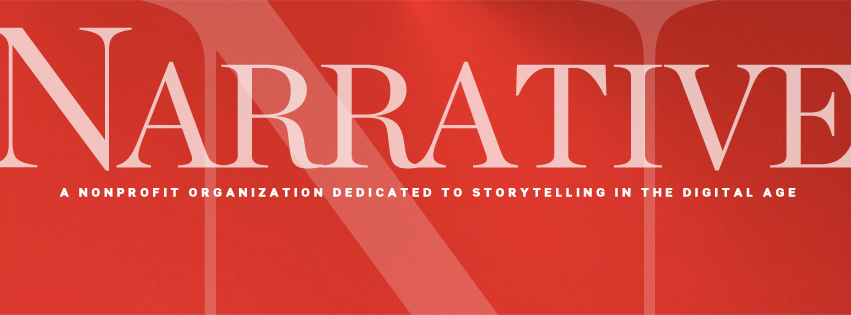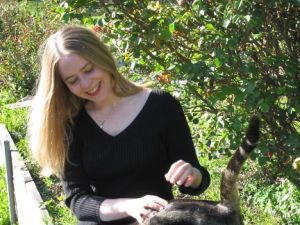
Narrative Magazine, one of the nation’s most prominent literary venues, is about to celebrate the 10th anniversary of its founding. The magazine’s founders note that the years have been but a breath and a heartbeat but also a long sustained burning of midnight oil. So the editors and staff are really looking forward to the anniversary celebrations, to take place in San Francisco in April and in NYC in the autumn. Many good and dedicated people helped create and build Narrative, and the celebrations promise to bring together the magazine’s friends, old and new, to raise a glass to writers and great writing.
When Carol Edgarian and Tom Jenks started the magazine in 2003, there were no online or digital platforms for first-rank literary work—The New Yorker, the Atlantic, Harper’s, the Paris Review, none of them, nor any other quality publisher of literature, had an online presence. And, according to studies done by the NEA, readers were falling away from literature by the millions, and certainly the rise of technological media was a big part of the shift away from reading. A general sense of depression and indirection was overtaking the literary community, and Edgarian and Jenks wanted to show what quality literature could look like online. They started with six authors and about a thousand readers. (The contents of the first issue are available here.) And the founders recall that when they started the magazine, no one—friends and authors—seemed to understand what an online magazine would be, though observers were all cheerful enough about it, as if to humor Edgarian and Jenks by saying, Sure, why not?
Today, of course, everyone grasps the challenge and opportunity that technology presents for literature, but until Amazon launched Kindle in 2007, the handwriting on the wall wasn’t read by many publishers and litterateurs, who should have been reading it much sooner. Change, especially the kind of radical change that has taken place in publishing, is always met with resistance, and existing book and magazine content was less immediately available to be digitized than were film and music files. Old-line publishers, clinging to print rights, sunk costs, and traditional bona fides (a digital publication was not considered a “real” publication), harbored reluctance and denial, though the shift from bricks-and-mortar to digital was inevitable once the technological revolution started and the Internet caught the collective imagination. In the early stages of this shift, Douglas Coupland observed that the Internet had begun to look like a cross between a shopping mall and a bordello, and today online commercialism remains a big challenge to literary values. Amazon’s “the readers decide” is a great consumer-oriented retail credo, but as a literary value it’s akin to a popularity contest. Narrative began and continues as an example of excellence, combining old-school values with new media technology. Narrative was one of the first two periodicals to release an iPhone/iPad Application (it’s free) and was one of the first periodicals available on Kindle. The magazine has 150,000 readers and publishes several hundred writers and artists each year. Narrative has been much watched and imitated by other periodicals with vastly greater resources, and now in an environment in which technology and business investment seek scalability and ROI above all, Narrative continues to look for ways to co-opt the means of production for the sake of literature. “We can’t take its existence for granted,” Jenks notes, “or think that the free market values it as we do.”
He also notes that the constant readership for good writing forms a small subculture within mass-culture. Sometimes a book or author crosses over from the small world to the large, most often in the case of a film adaptation. Cormac McCarthy’s first five books sold about three thousand copies each. Then came the film version of All the Pretty Horses. There are other examples, but the point is that all who care deeply about literature and its generative effect on society recognize that anything and everything that can be done to encourage good writing and reading needs to be done. Narrative has sought to reach as many readers as possible, to put forth the best work by the best writers, to engender an intelligent and respectful level of discourse, and to further the best of traditional literary values into the new age.
With Narrative the editors offer as transparent a medium as possible to connect readers and writers. The magazine aims to advance no editorial stamp or personality such that anyone might say that a particular work is a “Narrative Magazine” sort of piece; rather, the editors’ interest is in good writing and narratives that are entertaining, unpredictable, and charged with the shock of recognition that occurs when the human significance of the work is made manifest. The editors look for pieces in which the effects of language, situation, and insight are intense and total. Many of the authors featured in Narrative are well-known, but the magazine is also dedicated to presenting new and emerging writers and features many first-time authors.
Asked about the magazine’s name, Edgarian reported, “In 2003, a friend of ours, the essayist Susan L. Feldman, knowing we were preparing to launch a new magazine called Narrative, sent us a one-line quote from a Paul Baumann review of a Thomas Keneally novel. Baumann, the editor of Commonweal, wrote, ‘Only myth, only narrative . . . can capture the mystery of human goodness and evil.’ A few years later, at a Narrative Night event, Robert Stone noted, “Stories are as necessary to us as bread. There is no sense or order to experience outside of narrative. Whether in prose or poetry, writers continually revivify the myths that illuminate our lives as we move from the known into the unknown.”
Looking ahead to what the next 10 years may bring for Narrative, Jenks said, “Ha! Where’s my crystal ball? As a kid growing up in the 1950s and ’60s and hearing about the Soviet Union, the five-year plan always struck me as a good model, provided you didn’t have to adhere to it rigidly. That is, you can chart the future, knowing that as you reach each milestone the landscape looks somewhat different than imagined, and the chart must be adjusted again and again as you go forward. But Narrative’s primary goals remain the same as when we started: Expand the readership for good writing; support writers by paying them as well as possible and by providing keen editorial encouragement; train young publishing professionals in the best traditional values and new practices; help shape the future of literature within the new media.”
The longtime editor also had some advice for writers looking to publish. “About 70 percent of unsolicited manuscripts begin with someone waking up, or with someone taking a drink, or with a phone call. Sometimes all three of these motifs are combined, as in, ‘I woke with a dreadful hangover to the incessant ringing of the phone.’ The clichéd waking beginning tends to be an unconscious metaphor for the dawning consciousness of the writer. I’m not saying not to use a waking beginning, but it’s well to be aware of the odds against it and, if using it, then to do something original and essential with it. The opening of Anna Karenina offers an inspiring example.”
For writers thinking about submitting work to Narrative, Jenks said, “You should submit to Narrative only if you have taken the time to read the magazine and to know its cast. If the magazine appeals to you, and if you have assayed your work in relation to the work you see in the magazine, then a submission may be in order. An unfortunate perennial circumstance is that many more people tend to send their work to any magazine than actually trouble to read the magazine with any accurate attention. We give Narrative away for free to encourage reading first.”
 My stint as Summer Blogger for Superstition Review was the impetus I needed to move forward toward finding a graduate degree program. I have always enjoyed writing, but other than English 102, a blogging course taught by Trish, research reports in Sustainability, and weekly posts in Sociology and Rhetorical Studies, I have had no assignments to write. I had thought about applying for a Masters of Arts in the School of Sustainability because I found the subject matter compelling—the kind of science policy I could rap about. I had started a sustainability blog in the blogging class (ecocanyon.org) and fed it a few posts, but, alas, it has wallowed since. Nevertheless, working in a literary environment, albeit an online environment, was stimulating. I was especially drawn to creative nonfiction. For years, I have been an avid of reader The Sun Magazine and The New Yorker.
My stint as Summer Blogger for Superstition Review was the impetus I needed to move forward toward finding a graduate degree program. I have always enjoyed writing, but other than English 102, a blogging course taught by Trish, research reports in Sustainability, and weekly posts in Sociology and Rhetorical Studies, I have had no assignments to write. I had thought about applying for a Masters of Arts in the School of Sustainability because I found the subject matter compelling—the kind of science policy I could rap about. I had started a sustainability blog in the blogging class (ecocanyon.org) and fed it a few posts, but, alas, it has wallowed since. Nevertheless, working in a literary environment, albeit an online environment, was stimulating. I was especially drawn to creative nonfiction. For years, I have been an avid of reader The Sun Magazine and The New Yorker.

